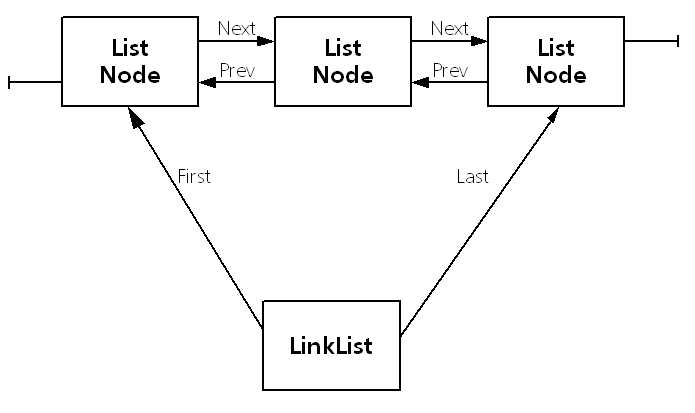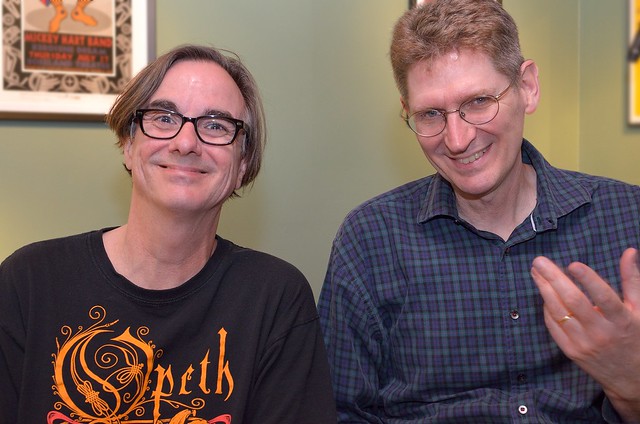For the past few years, I’ve had a personal project going where I listen to everything I have by a particular artist, in chronological order, at around the rate of five or six recordings a week. In 2013 I worked my way through my
Charles Mingus recordings, and it was great fun. It confirmed for me that my favorite Mingus album is still the first one I got into, and one of the first jazz albums I ever paid attention to (back in 1966!):
Mingus Dynasty.

The mid- to late-’50s was a fantastic period for Mingus. I love all the Debut stuff and am really drawn to the mid-sized ensemble stuff like
Dynasty and
East Coasting. I deeply love the 1964 European tour, and I’m a huge fan of
Eric Dolphy, but I do feel that the shows from that tour too often depend more on virtuosic soloing than on presenting the compositions. Not that I have any problem with virtuosic soloing, especially from Mingus, Dolphy, and Jaki Byard! Far from it. But I just find that while those shows blow me away, I keep being drawn back to the lush Ellington-like orchestrations and voicings of Mingus’ 1956-59 ensembles, that depend more on arrangements and beautiful heart-rending melodies than they do on great jazz soloing. Or maybe I don’t know what I’m talking about, because all the ‘64 performances of “Meditation on Integration” (or whatever he chose to call it at the time--the title changes a lot) are some of my all-time favorite Mingus recordings. Anyway, other (later) favorites include
Let My Children Hear Music and
Cumbia and Jazz Fusion.
After Mingus, I began working my way through
Miles Davis. By the end of the year, I’d gotten up to the 1967 European tour. Big takeaway for me that’s not really much of a takeaway since I’ve already thought it many times before: I don’t understand what the hell
Tony Williams is doing! Even when I watch videos of the quintet, he’s just moving so fast and his ideas and execution are occurring at a superhuman rate. Whenever I feel like giving up drumming, the way to do it for me is to try to play along with one of the ‘65-’67 quintet albums. He’s such a brilliant drummer. Beyond the second great quintet, I find that for Miles’s playing I am more drawn to the Blackhawk sessions and to the transitional period documented on the Seven Steps box set than I am to the recordings with Coltrane. As great as he sounded with Trane, I think his playing progressed leaps and bounds after Trane split.

I’ve also been delving into various large ensemble works of
Anthony Braxton. I worked my way through all my Braxton recordings a couple of years ago, and so lately I’ve been digging deeper into some of the big band music he’s done, like
Eugene and
4 (Ensemble) Compositions 1992. In terms of newer Braxton, I am still trying to understand
Echo Echo Mirror House. This is where everyone in the band gets an iPod loaded with nothing but Braxton music, and each musician gets to play the Braxton music of their choice along with their own instrument. With ensembles of seven or eight people, it can get quite dense and overwhelming. I listen to a lot of live audience recordings of varying quality, and I like to think I have a high tolerance for bootleggy sound. I have a couple of cavernous Echo Echo shows from Wesleyan, and they are rough going. I have to say this is one case where the sound quality really makes a huge difference in the experience of the music. The Victo disc is clean and bright, and you can really discern some of the threads of this intricate and challenging music, and I can even sometimes identify pieces from older recordings (mostly it’s so dense and chaotic that it’s hard to pick anything out). Other Braxton recordings I find myself returning to a lot are the shows he did with
Cecil Taylor in 2007, especially the 2007-06-08 show in London. These are amazing performances. While it seems unlikely that these two giants will play together again (then again, what do I know?), we are so lucky to have these. Braxton continues to keep me on my toes!

I spent a lot of 2013 delving into the music of
Daniel Barbiero. Impeccable, meditative, experimental, his double bass playing and composing can be dark, moody, and always intriguing. Some fave solo recordings include
Haiku 08 and
Not One Nor. He has a great album of duets with Jimmy Ghaphery,
Hermes' Labyrinth. And I really dig his playing in the more jazzy trio
Colla Parte, especially their live recording in DC on
2012-06-21. I am really looking forward to playing with Dan in February.

In the realm of pop rock, the highlight for 2013 for me was certainly
Scott Brookman’s brilliant
Smellicopter. Another RVA artist, Scott nails it with his strongest album yet. Quirky flavors of
High Llamas, Beach Boys, Todd Rundgren, and Brazilian pop all blend together in a wonderful series of strong catchy songs. One of the major appeals of the album is the appearance of Spanish guitarist/vocalist
Yani Martinelli (whose own record
Bubble Station is another excellent addition to the post-Lllamas soundscape). Bandmate Jimmy Ghaphery contributes sax on a couple of tracks. You can find
Smellicopter here and soon on
CD Baby.
The
Beach Boys box set
Made in California was mostly notable for its plethora of unreleased gems (where do they keep coming up with this stuff, and why the hell don’t they just release it all instead of sporadically spreading them out in otherwise redundant best-of collections? Besides money?). The best are Brian’s composition “Why” (sounding more like the High Llamas than the Beach Boys), Dennis Wilson’s "(Wouldn't It be Nice To) Live Again," and the long version of “Meant for You,” with its mindblowing lines about ponies and puppies. OK, whatever!

I’ve spent the last few years trying to collect every
Dead version of “Dark Star” I could get my hands on. As it stands now, I’ve got almost all of ‘em (most of my gaps are from the ‘80s). This is a song that keeps on giving. I’ve listened to all of them multiple times and I feel like I’ve barely scratched the surface. Right now my personal faves are all from 1972, culminating in what may be the best ever, Veneta August 1972, finally out officially on
Sunshine Daydream.
I am so glad to finally have
Dark Carpet out on an official release. Of course I’ve been following them from the beginning, and the
released album is their best music yet. Keep rockin’, guys!
I’ve always spent a lot of time listening to music I’ve played myself. 2013 saw the formation of
New Ting Ting Loft, an expansion of our longstanding trio to include
two electronic/noise artists, Tommy Birchett and Ben Scott. I am so loving the new sonic areas we are exploring. The gigs I’ve done with Dan Barbiero and
Nancy Havlik's Dance Performance Group have been deeply satisfying. Dan always comes up with great frameworks for improvising that are challenging and fulfilling.
In 2013 I continued my ongoing project of burning the best stuff from
UYA. After finally finishing up going through all the
Tad Thaddock cassettes and burning the best tracks, I’ve moved on in earnest to UYA. There are about 400 cassettes to get through, covering 1988 to 1995. So far I’ve gone through about 50 cassettes and am up to 1989. I hope to make more progress on this project in 2014. More about that later.
I’ve been getting my rock/funk/fusion rocks off with a group of guys out in Varina. No group name, but a really solid collection of players who always push me to the limit. I’d love to see us play live sometime in 2014. Finally, as I’ve mentioned
previously, my duo sessions with
Rodger Coleman at the end of the year have blown me away. A great capper for the year: 2013 playing, 2014 listening.
There’s plenty more to cover, but let me just close by saying that for 2013, the listening was good. There’s so much great music out there!





 The mid- to late-’50s was a fantastic period for Mingus. I love all the Debut stuff and am really drawn to the mid-sized ensemble stuff like Dynasty and East Coasting. I deeply love the 1964 European tour, and I’m a huge fan of Eric Dolphy, but I do feel that the shows from that tour too often depend more on virtuosic soloing than on presenting the compositions. Not that I have any problem with virtuosic soloing, especially from Mingus, Dolphy, and Jaki Byard! Far from it. But I just find that while those shows blow me away, I keep being drawn back to the lush Ellington-like orchestrations and voicings of Mingus’ 1956-59 ensembles, that depend more on arrangements and beautiful heart-rending melodies than they do on great jazz soloing. Or maybe I don’t know what I’m talking about, because all the ‘64 performances of “Meditation on Integration” (or whatever he chose to call it at the time--the title changes a lot) are some of my all-time favorite Mingus recordings. Anyway, other (later) favorites include Let My Children Hear Music and Cumbia and Jazz Fusion.
The mid- to late-’50s was a fantastic period for Mingus. I love all the Debut stuff and am really drawn to the mid-sized ensemble stuff like Dynasty and East Coasting. I deeply love the 1964 European tour, and I’m a huge fan of Eric Dolphy, but I do feel that the shows from that tour too often depend more on virtuosic soloing than on presenting the compositions. Not that I have any problem with virtuosic soloing, especially from Mingus, Dolphy, and Jaki Byard! Far from it. But I just find that while those shows blow me away, I keep being drawn back to the lush Ellington-like orchestrations and voicings of Mingus’ 1956-59 ensembles, that depend more on arrangements and beautiful heart-rending melodies than they do on great jazz soloing. Or maybe I don’t know what I’m talking about, because all the ‘64 performances of “Meditation on Integration” (or whatever he chose to call it at the time--the title changes a lot) are some of my all-time favorite Mingus recordings. Anyway, other (later) favorites include Let My Children Hear Music and Cumbia and Jazz Fusion.








